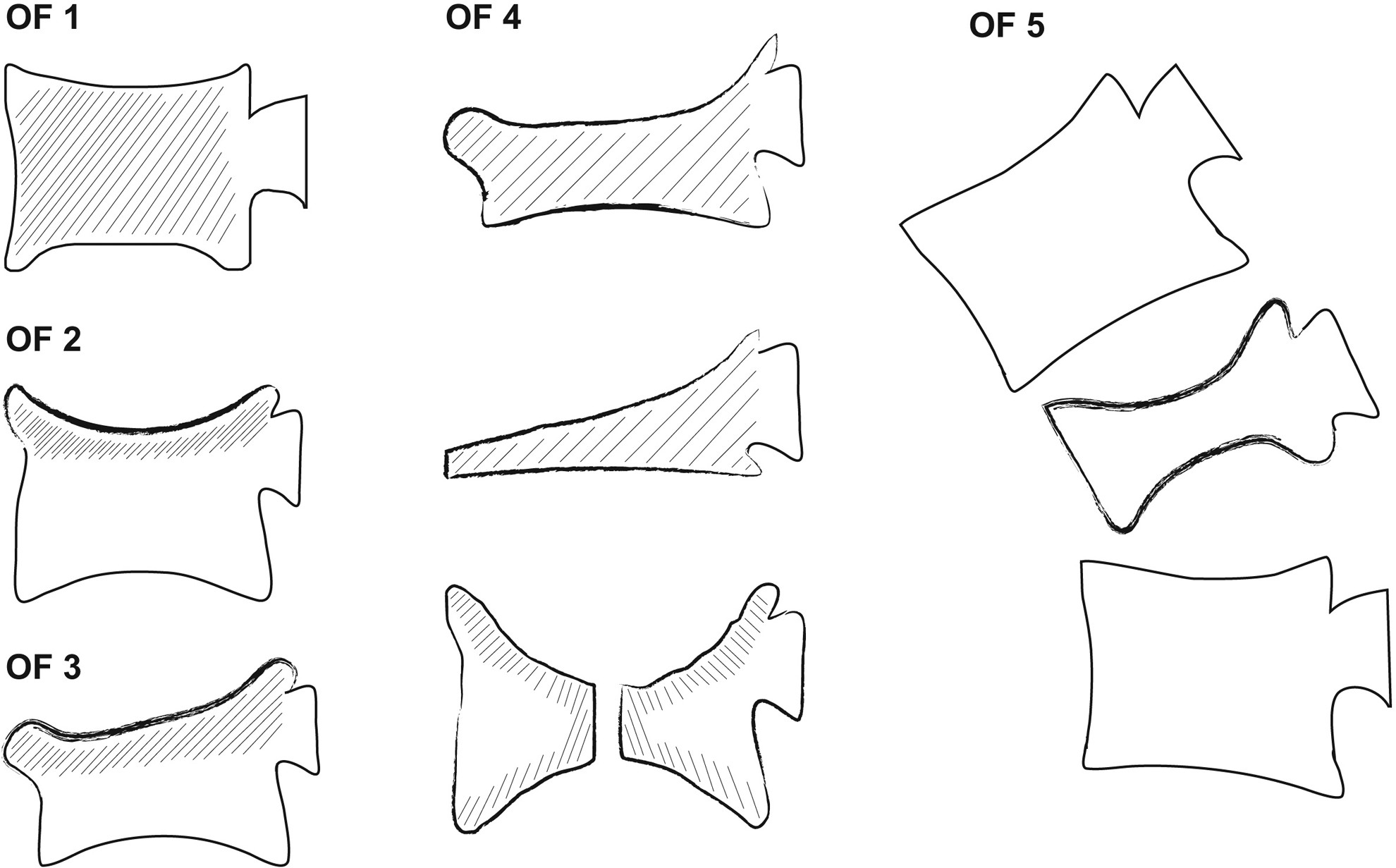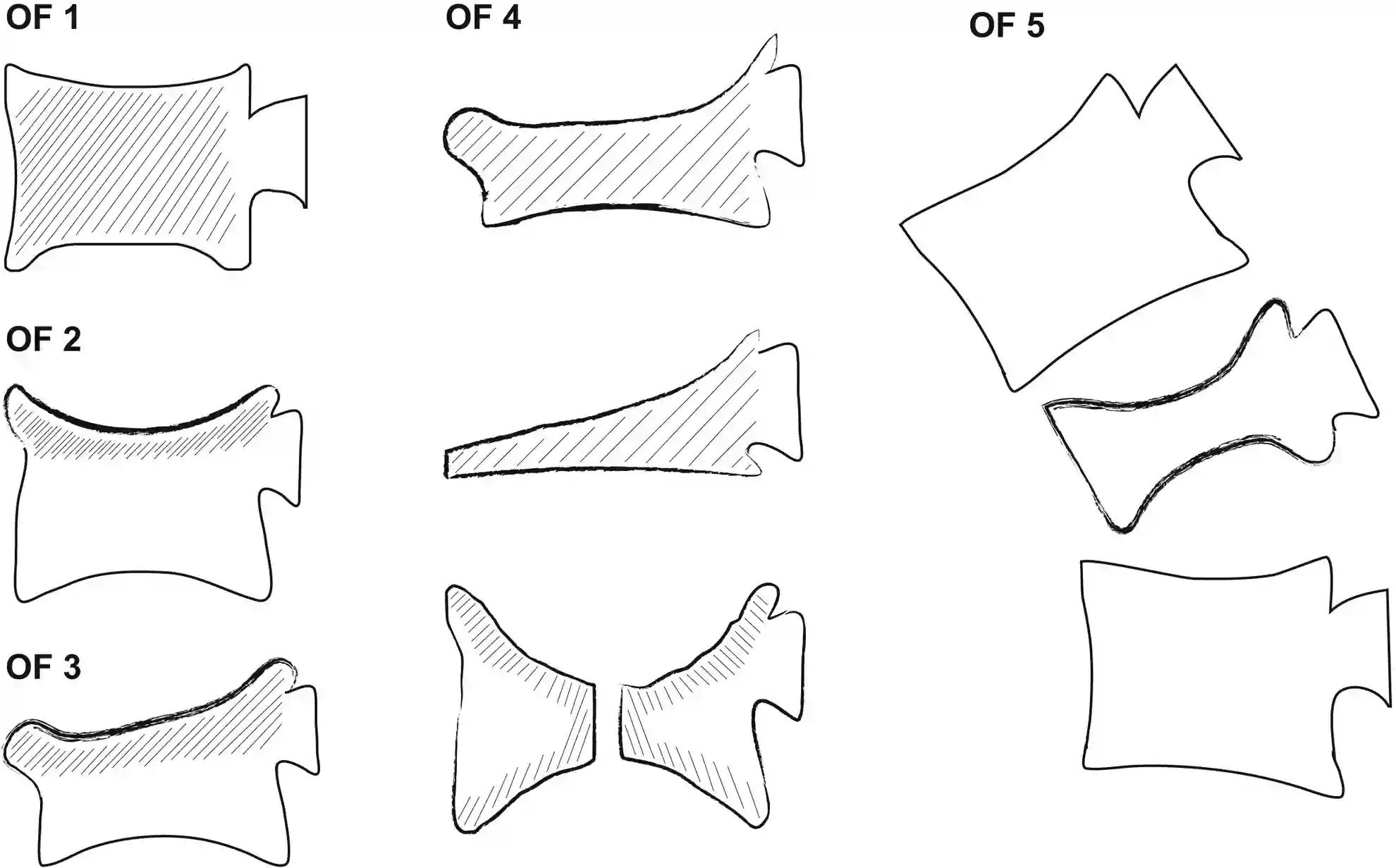The osteoporotic vertebral fractures classification (OF-classification) is used to categorize osteoporotic fractures into 5 different subtypes. The classification was published in 2018 by Schnake et al. [^1].
Classification
OF Subtype | Description |
OF 1 | No vertebral deformation (vertebral body edema in MRI-STIR only). This type is rare. The stable injury is clearly visible on MRI-STIR sequence only. X-rays and CT scan do not show vertebral deformation. |
OF 2 | Deformation with no or only minor involvement of the posterior wall (<1/5). This type of fracture affects one endplate only (impression fracture). The posterior wall can be involved, but only minor. OF 2 are stable injuries. |
OF 3 | Deformation with distinct involvement of the posterior wall (>1/5). This type of fracture affects one endplate only, but shows distinct involvement of the anterior and posterior wall (incomplete burst fracture). The fracture can be unstable and may collapse further over time. |
OF 4 | Loss of integrity of the vertebral frame structure, or vertebral body collapse, or pincer-type fracture. This subgroup consists of 3 fracture types. In case of a loss of integrity of the vertebral frame structure both endplates and the posterior wall are involved (complete burst fracture). A vertebral body collapse is typically seen as a final consequence of a failed conservative treatment and can impose as a plain vertebral body. Pincer-type fractures involve both endplates and may lead to severe deformity of the vertebral body. OF 4 are unstable fractures and intravertebral vacuum clefts are often visible. |
OF 5 | Injuries with distraction or rotation. This group is rare but shows substantial instability. The injury includes not only the anterior column but also the posterior bony and ligamentous complex. OF 5 injuries can be caused either by a trauma directly or by ongoing sintering and collapsing of an OF 4. |
Figure

